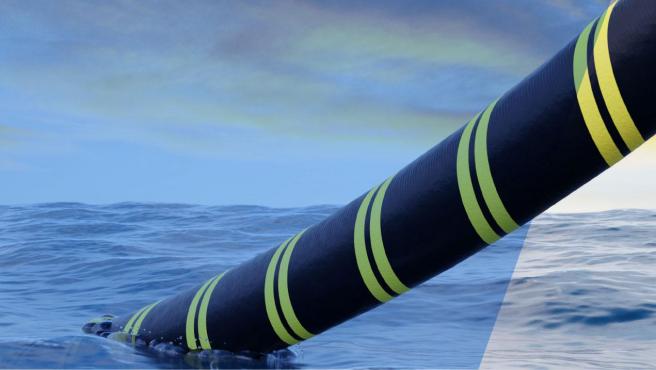Transporting energy from one country to another is possible . How? Once again the answer is under the sea. A large submarine high-voltage cable will carry the electricity captured in the deserts of northern Australia to Southeast Asia by 2027. Morocco will have a 10.5 GW solar and wind power plant by the end of this decade, energy that will be sent directly to the United Kingdom. Joined by a conduit that runs along the coasts of Spain and Portugal.
We are talking about 4,500 and 3,800 kilometers respectively of current under water . How do they work? What does it take to build them? Are they more effective than other forms of energy supply?
In recent months these projects, mega-constructions that will become the most colossal in their field, have been announced, since there are other experiences of submarine power cables, but none as large as those proposed for Australia and Morocco .
Heat from Australia’s deserts could supply 20% of Singapore’s electricity supply.
The energy generated in a new solar farm installed in the deserts of northern Australia will be taken to the Indo-Pacific region, reaching Singapore, a city that could supply 20% of the electricity supply .
The company developing the project, Sun Cable , says it will be the largest solar farm in the world and visible from space when built near the town of Elliott, midway between Darwin and Alice Springs.
To connect these territories, a 4,500-kilometer submarine cable will be deployed , a project that, according to its promoters, will be ready by 2027 and is expected to provide 1,500 direct jobs and 12,000 indirect jobs during construction, with 350 long-term operational jobs distributed. between the solar farm site at Elliot and Darwin.
Construction is expected to start in late 2023 , with solar power reaching Darwin in 2026 and Singapore the following year.
“A major energy transition is taking place in the Indo-Pacific and the share of energy supplied by electricity is growing rapidly. In Southeast Asia, energy demand is growing at an average of 6% per year and is projected to grow 60% by 2040. The demand for renewable electricity is accelerating due to its low cost . Australia has the world’s highest per capita solar resource in the G20 and the second highest in the world. There is a unique opportunity to export large volumes of renewable energy, which supports regional energy needs and maintains economic growth, “they explain from Sun Cable.
Bringing the sun from Morocco to the United Kingdom to cover 8% of its energy
Current map of the submarine cables in the world, about 430 in total.
The secret pipes in the oceans: this is how the submarine cables that carry the Internet to your home are like
Guelmim-Río Nun is one of the twelve regions of Morocco and has an area of more than 46,000 square kilometers. Close to the Canary Islands, this territory will have a 10.5 GW solar and wind power plant by the end of this decade . However, this energy will not remain in the country, but will serve to supply the electricity supply of the United Kingdom.
How? Through a large submarine power cable that will border the coasts of Spain and Portugal, reaching a length of 3,400 kilometers . Specifically, the Morocco – United Kingdom Energy Project will be made up of four high voltage cables.
Behind this mega-construction is Xlinks, a British company that seeks to provide energy to 7 million homes in the United Kingdom by 2030, that is, 8% of the energy needed in the country , through this cable from Africa. The wind and solar plant that will be installed there will have around 1,500 square kilometers and of the energy capacity that will have 7 GW will be solar and the other 3.5 GW will be wind.
Why this territory of Morocco? The company claims that this area has the third highest global horizontal irradiation (GHI) in North Africa. In other words, the hours of sunshine available each day throughout the year. On shorter winter days you still get 10 hours of sunshine . This is 20% more than Spain and twice that of the United Kingdom.
For its construction and development, this project has a planned investment of around 20,000 million euros and the first cable is expected to be finished by 2027 and two years later the other three.
A submarine power cable is a transmission cable for carrying electrical energy under water, usually from salt water, but it is also possible to use them under large lakes and rivers.
As in the case of submarine cables dedicated to data transmission, which we have already told you about. , these have a main core in the innermost part that is covered by insulation and protective layers .
The conductor – main core – is made of copper or aluminum wires and cross-linked polyethylene with a thickness of up to about 30 mm is usually used for insulation. They are also equipped with an extruded lead sheath to prevent water ingress. Most electrical power transmission systems use alternating current (AC), because transformers can easily change voltages as needed.
Submarine cables allow for a global Internet.
Currently, the longest submarine power cable is the one that connects the United Kingdom and Norway under the North Sea, at 720 kilometers . It connects the Kvilldal power grid – a hydroelectric complex in southern Norway – with Cambois, near Blyth, in the north-east of the UK.










